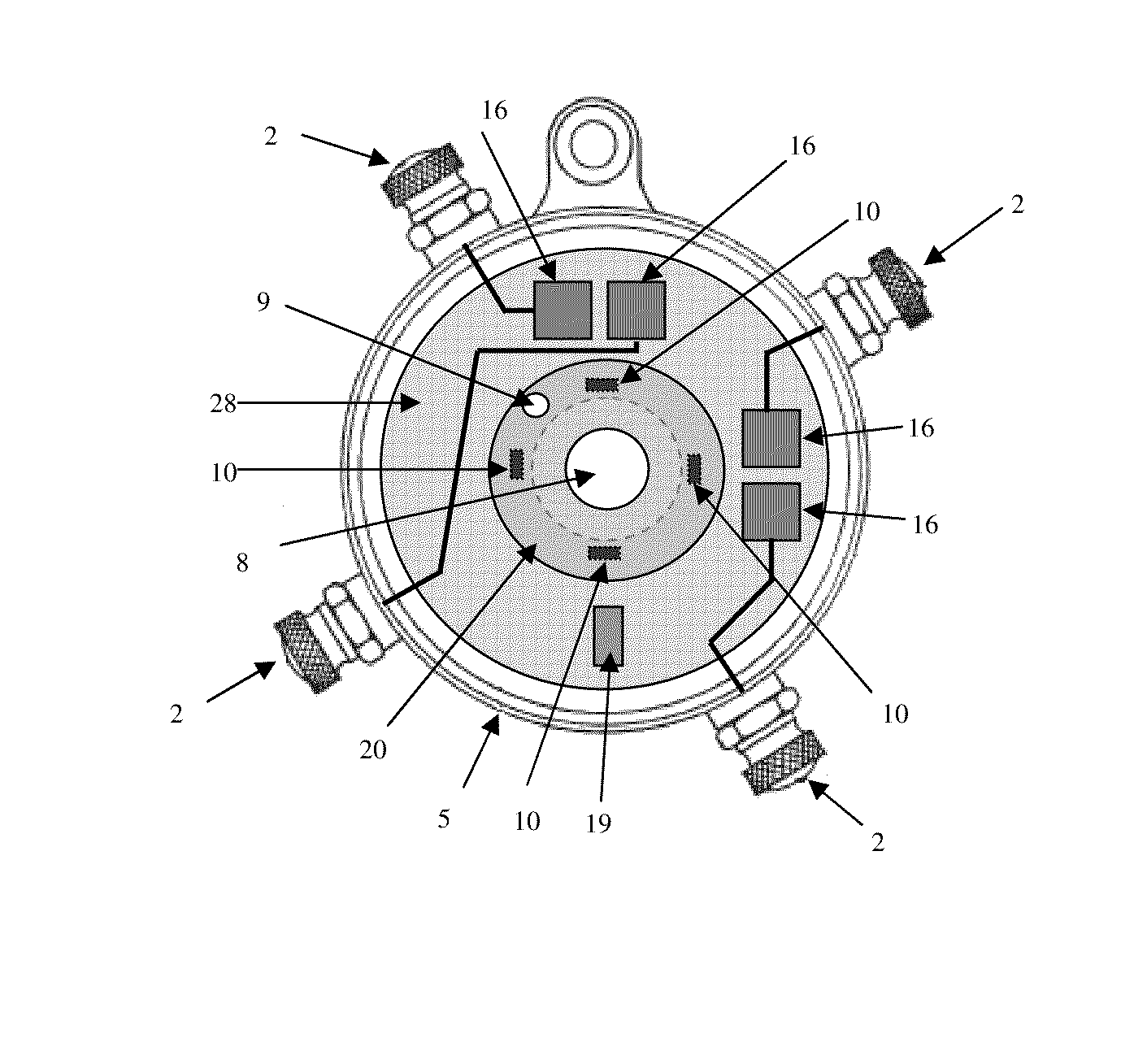Method and apparatus for providing electronic ignition of early automobile engines
a technology of electronic ignition and automobile engine, which is applied in the direction of mechanical equipment, machines/engines, lighting and heating apparatus, etc., can solve the problems of increasing the difficulty of finding replacement parts, rendering them completely undetectable by visual inspection, etc., and achieve the effect of facilitating the description of their operation
- Summary
- Abstract
- Description
- Claims
- Application Information
AI Technical Summary
Benefits of technology
Problems solved by technology
Method used
Image
Examples
Embodiment Construction
[0022]Referring to FIG. 6, which shows one embodiment of the present invention, commutator housing 5 employs electrical terminals 2 that are normally isolated from commutator housing 5. Ignition module 28 is physically mounted within housing 5. Electronic sensors 10 located on ignition module 28 are actuated by sensor activator 9 located on rotor 20 that is physically mounted to engine CAM shaft 8. Operation is as follows: Rotor 20 rotates with engine CAM shaft 8. Sensor activator 9 functions to activate a particular sensor 10 when it moves within close proximity to it. Microcontroller 19 located on ignition module 28 detects actuation of the particular sensor 10 and functions activate a corresponding electronic switch 16 that electrically connects its corresponding terminal 2 to commutator housing 5 which is also normally electrically connected to engine ground. Microcontroller 19 determines the mapping between sensor 10 activation and which electronic switch 16 is activated. The p...
PUM
 Login to View More
Login to View More Abstract
Description
Claims
Application Information
 Login to View More
Login to View More - R&D
- Intellectual Property
- Life Sciences
- Materials
- Tech Scout
- Unparalleled Data Quality
- Higher Quality Content
- 60% Fewer Hallucinations
Browse by: Latest US Patents, China's latest patents, Technical Efficacy Thesaurus, Application Domain, Technology Topic, Popular Technical Reports.
© 2025 PatSnap. All rights reserved.Legal|Privacy policy|Modern Slavery Act Transparency Statement|Sitemap|About US| Contact US: help@patsnap.com



